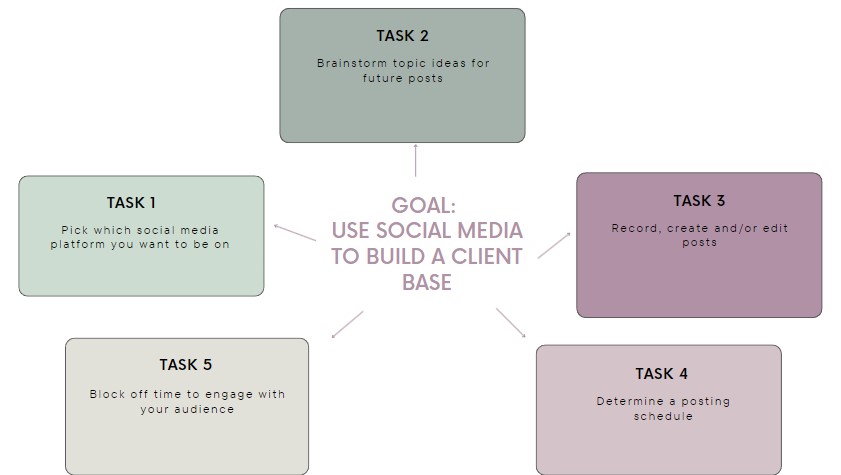
Think of goal setting as your roadmap for success – it guides your efforts and keeps you focused on your objectives. It helps you avoid distractions, overthinking, and indecision which can often make you feel stuck.
Getting Started
Knowing your “why” is the first step. It helps you stay locked in on your long-term vision, despite any setbacks. For example, if your “why” is to provide financial security for your family, you’ll be more likely to push through during challenging times, because you have a compelling reason to keep going.
Next, start by writing down everything you want to achieve. It doesn’t matter if it feels impossible or in the distant future.
Now review your list.
Choose 1-3 goals you want to focus on now – the goals that will have the biggest impact on your business.
As you go through this list, ask yourself some questions:
- Why is this important?
- What difference will this make in your business?
- Will achieving this goal help attract new customers or increase revenue?
You want to avoid setting too many goals at once, as your attention will be divided, you may feel overwhelmed, and lose momentum.
Using the SMART Framework:
Specific: Clearly define your goals, avoiding vague or broad statements.
Measurable: Set goals that can be tracked and measured.
Achievable: Set realistic goals that challenge you but are attainable.
Relevant: Ensure your goals align with your overall business objectives.
Time-bound: Set deadlines to create a sense of urgency and accountability.
Example Framework:
Your Goal: I want to achieve [________________] (set goal e.g., increase revenue by 20% in the next 3 months)
By When: I will achieve this by [______________] (set a specific date)
Action steps: To reach this goal, I will [_____________] (list key tasks, such as working with a mentor, creating marketing materials, signup for a workshop)
Measure of success: I will know I’ve succeeded when [___________] (define what your milestone will be)
Creating Your Detailed Plan:
- Once you have established your top goals, break them down into smaller tasks to make them more manageable.
Let’s say you want to start using social media to build a client base. Here are some tasks you may consider.

Next:
- Determine the order in which tasks should be completed based on their importance and urgency.
- Set realistic deadlines for each task to maintain momentum.
- Find a mentor or peer group for accountability and support. The Northstar’s Hub group is a great place to share what you are up to, ask questions, and let others celebrate your wins with you.
- Regularly monitor your progress, revisit your why, and make adjustments as needed.
As you progress and start to cross off goals, you’ll not only boost your confidence but also gain a deeper sense of accomplishment and satisfaction. Find the daily rhythm that works for you consistently and build the habit of showing up.

